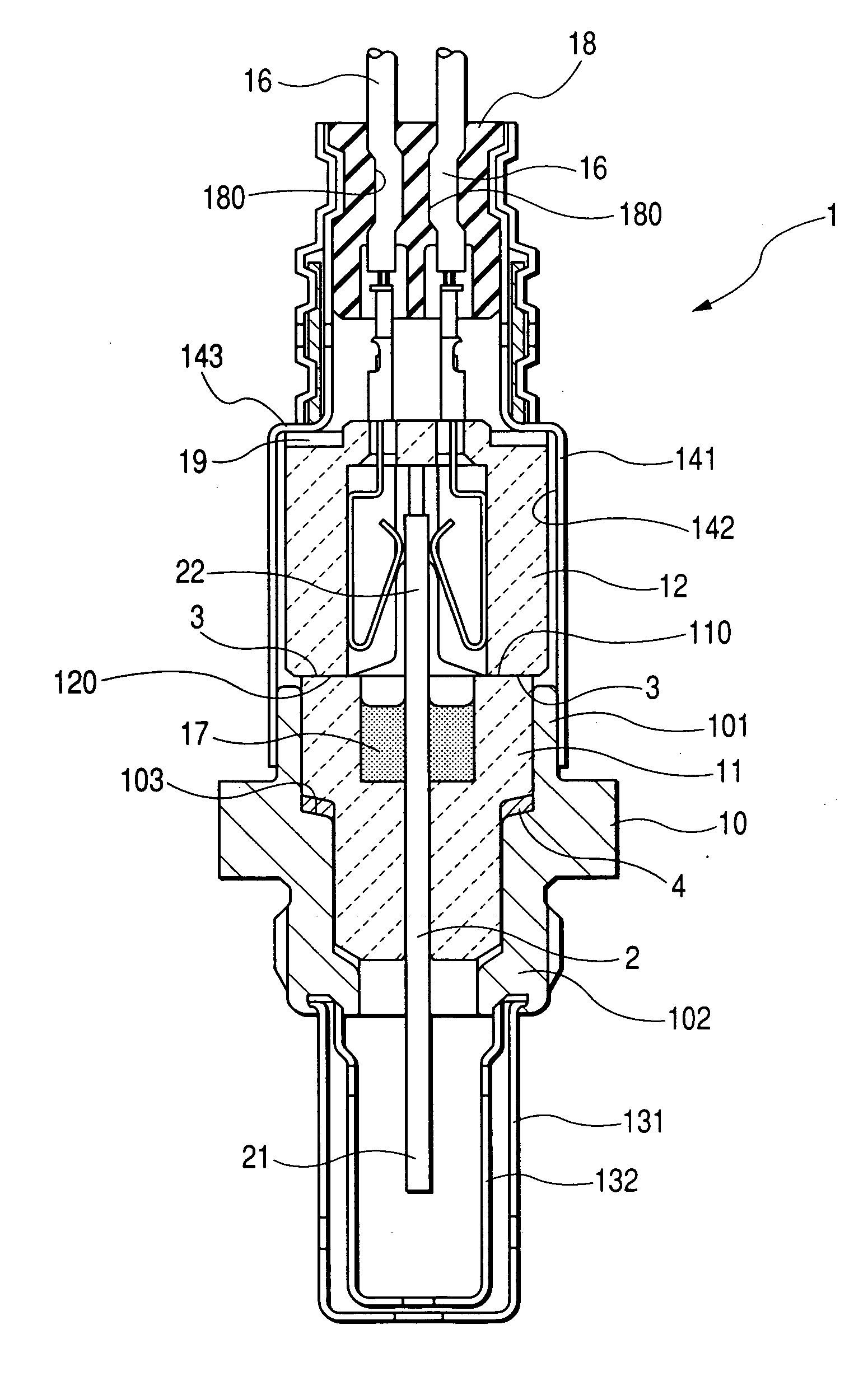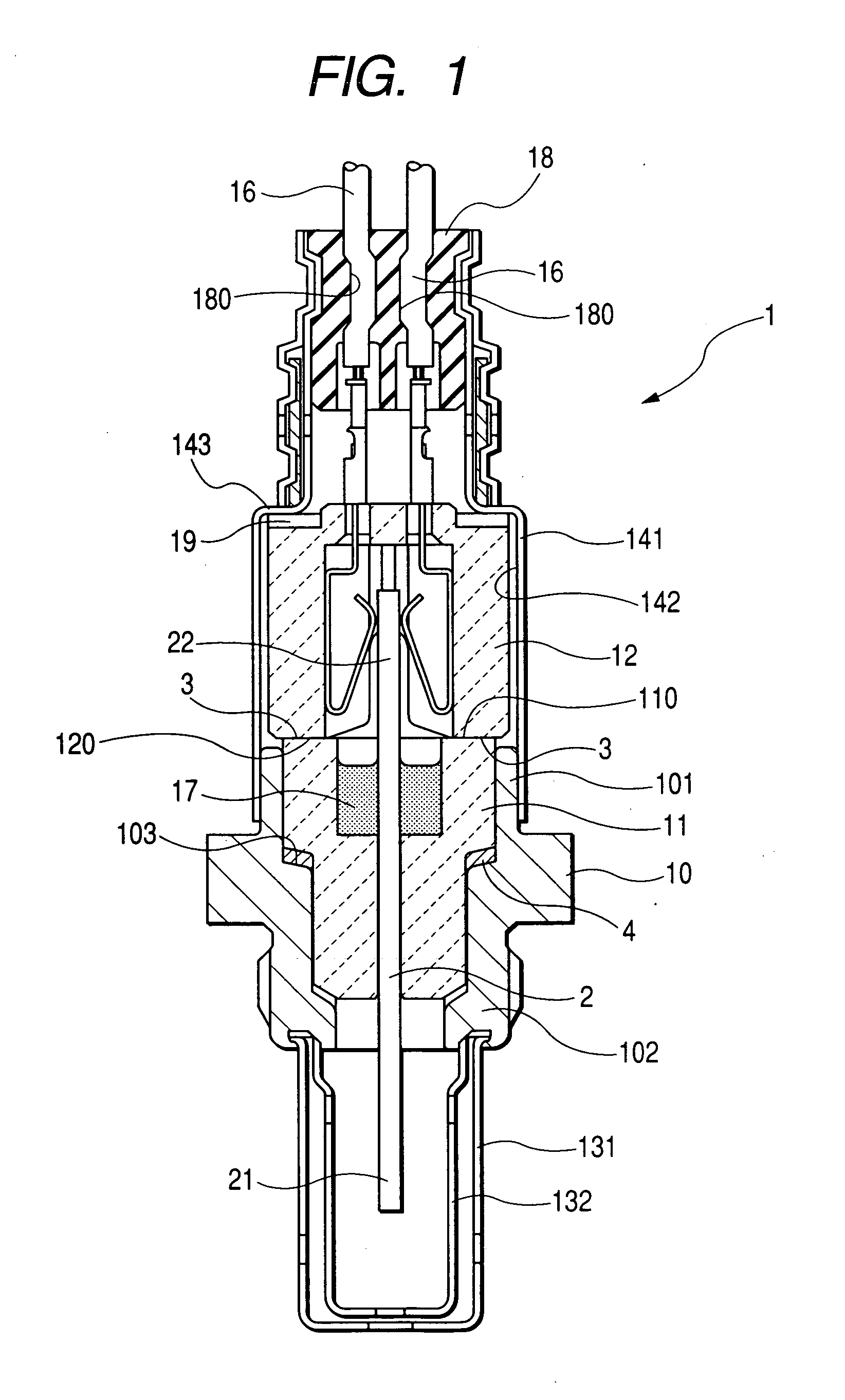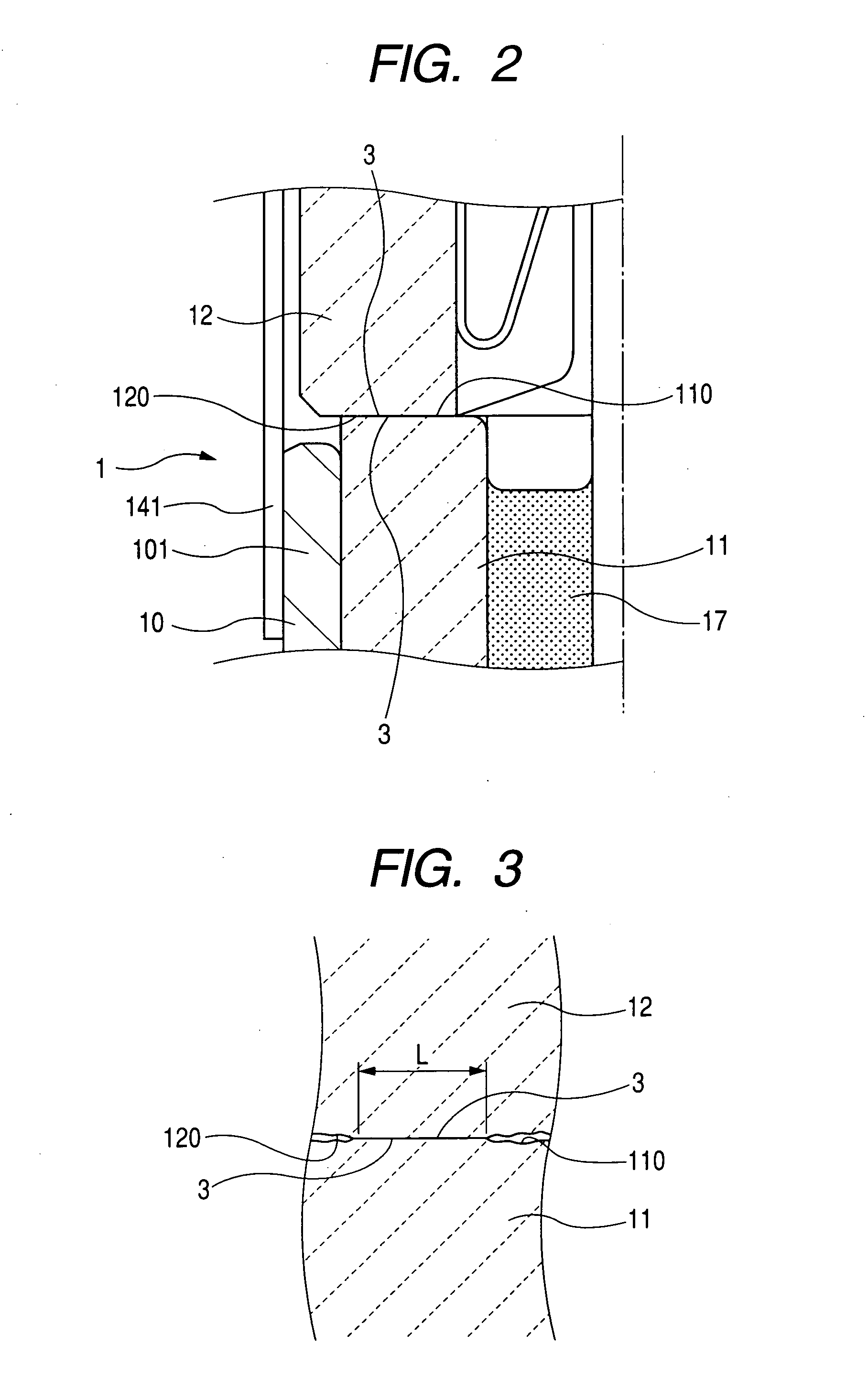Structure of gas sensor designed to minimize damage to porcelain insulators
a technology of gas sensor and porcelain insulator, which is applied in the direction of instruments, specific gravity measurement, machines/engines, etc., can solve the problems of many inherent defects of ceramic materials, and achieve the effect of reducing the concentration of local stress
- Summary
- Abstract
- Description
- Claims
- Application Information
AI Technical Summary
Benefits of technology
Problems solved by technology
Method used
Image
Examples
Embodiment Construction
[0044] Referring to the drawings, wherein like reference numbers refer to like parts in several views, particularly to FIGS. 1 to 5, there is shown a gas sensor 1 according to the first embodiment of the invention which may be employed in a burning control system for automotive vehicles to measure concentrations of components such as NOx, CO, HC, and O2 contained in exhaust gasses of an internal combustion engine.
[0045] The gas sensor 1 will be described below, as an example, as being installed in an exhaust system of an automotive engine to measure the concentration of oxygen (O2) contained in emissions for use in burning control of the engine.
[0046] The gas sensor 1 generally includes a sensor element 2, a first hollow cylindrical porcelain insulator 11, a second hollow cylindrical porcelain insulator 12, and a hollow cylindrical housing 10, an air cover 141, and a protective cover assembly made up of outer and inner covers 131 and 132. The sensor element 2 is made of a laminate...
PUM
| Property | Measurement | Unit |
|---|---|---|
| distance | aaaaa | aaaaa |
| diameter | aaaaa | aaaaa |
| diameter | aaaaa | aaaaa |
Abstract
Description
Claims
Application Information
 Login to View More
Login to View More - R&D
- Intellectual Property
- Life Sciences
- Materials
- Tech Scout
- Unparalleled Data Quality
- Higher Quality Content
- 60% Fewer Hallucinations
Browse by: Latest US Patents, China's latest patents, Technical Efficacy Thesaurus, Application Domain, Technology Topic, Popular Technical Reports.
© 2025 PatSnap. All rights reserved.Legal|Privacy policy|Modern Slavery Act Transparency Statement|Sitemap|About US| Contact US: help@patsnap.com



